Australian Tropical Rainforest Plants - Online edition
Diospyros hebecarpa Benth.
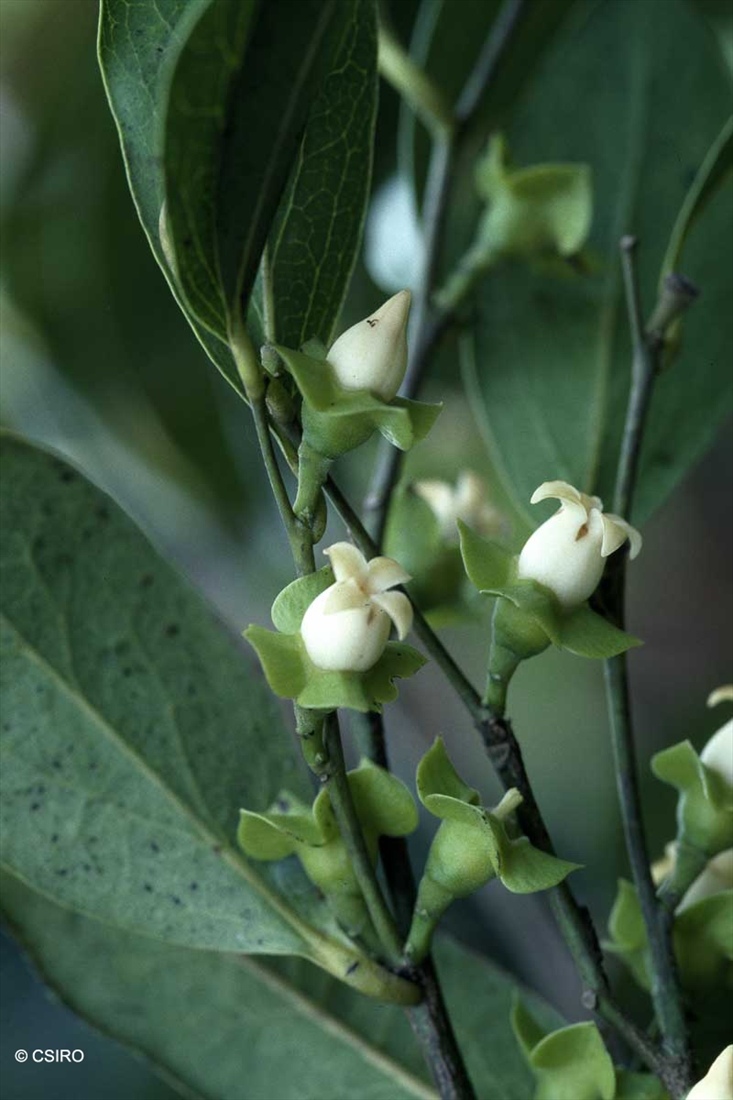
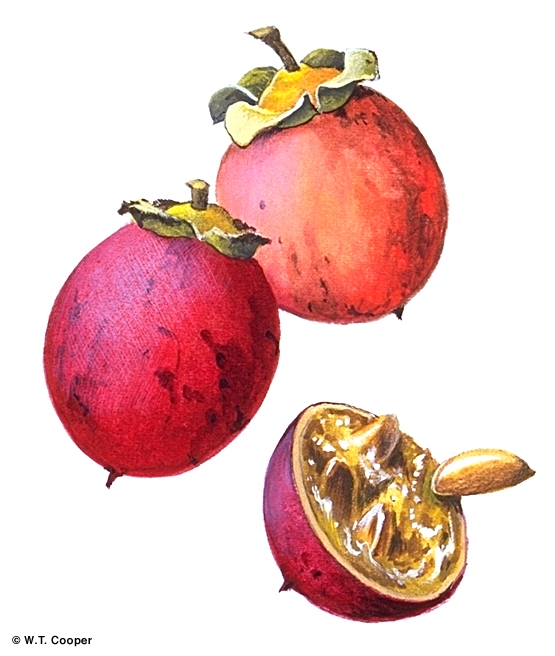
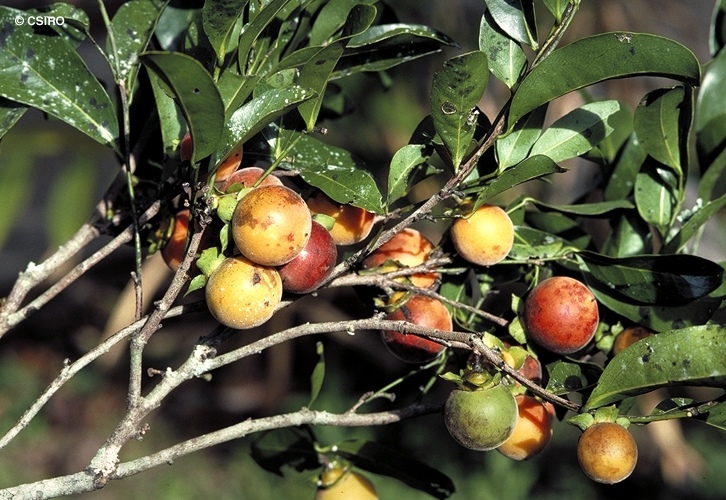
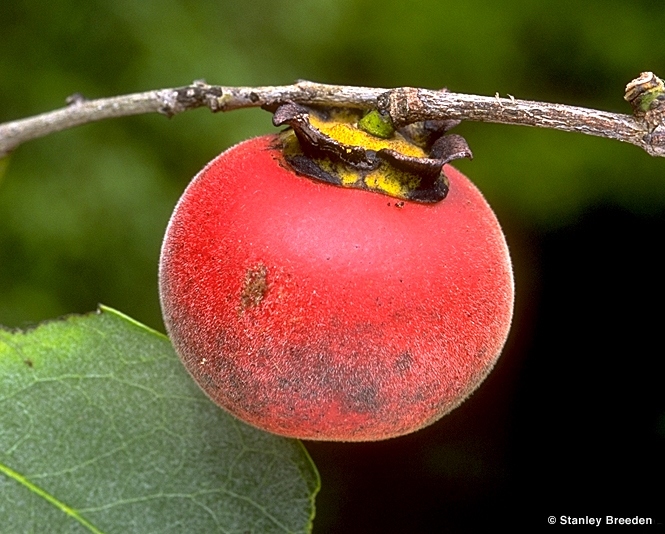

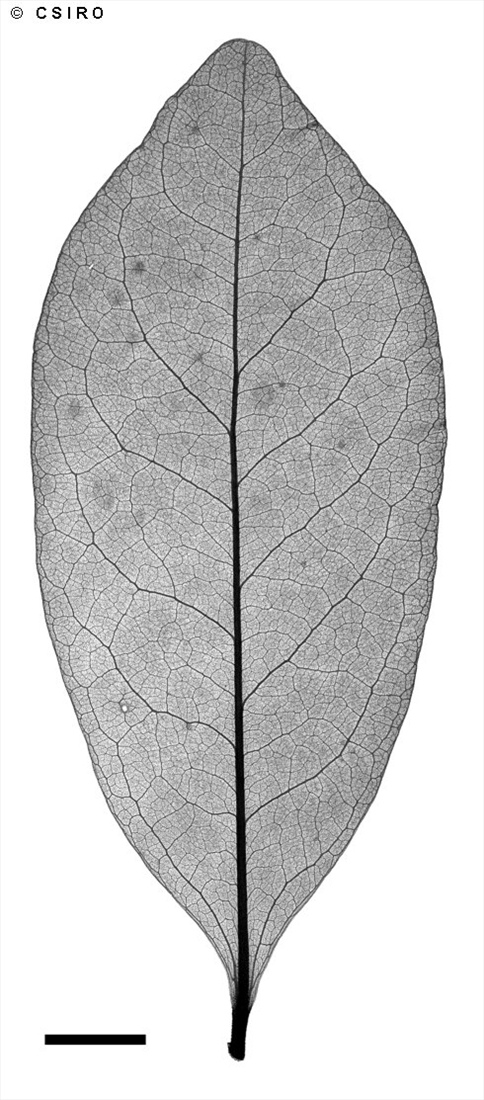


Bentham, G. (1868) Flora Australiensis 4: 286. Type: Queensland. Cape York, W. Hill; N.E. coast, A. Cunningham.
Scrub Ebony; Ebony, Scrub; Tulican
Tree to 20 m. Subrhytidome layer almost black. Inner blaze and cambial layer darken markedly on exposure.
Male inflorescence axes 3-11 mm long, with 3-10 flowers. Male flowers: Pleasantly perfumed; outer surface of the calyx and corolla mainly glabrous, sometimes very sparsely pubescent in parts; calyx scarcely 4-lobed at the apex; corolla 4-lobed; stamens 12-18, single or fused in pairs or threes, in two whorls, and fused at base to corolla tube. Female flowers solitary; calyx lobes 4(-5), thick and fleshy, broad at the base and abruptly constricted into an acuminate apex; corolla lobes 4, thick and fleshy; staminodes 7 or 8, attached to the corolla; ovary clothed in fine white or pale coloured hairs, 8 locules, 1 ovule per locule.
Fruits seated on a 3 or 4-lobed, reflexed calyx. Calyx mainly glabrous on the outer surface, inner surface (forming the seat for the fruit) densely clothed in prostrate hairs. Fruits sericeous or clothed in prostrate hairs before maturity. Fruits globular, about 30-45 mm diam. at maturity. Pericarp yellowish but turning dark brown when cut or handled, staining the observer's fingers and hands with a persistent brown colour. Seeds about 13-15 x 7 mm. Endosperm translucent, oily.
Cotyledons ovate to elliptic, about 30-35 x 20 mm. First pair of leaves narrowly obovate. At the tenth leaf stage: leaf blade elliptic to elliptic-obovate, glabrous on the upper surface but slightly hairy on the lower surface; midrib flush with or raised on the upper surface, lateral veins forming loops inside the blade margin. Roots almost black in colour. Seed germination time 18 to 102 days.
Occurs in CYP, NEQ and CEQ. Altitudinal range from near sea level to 600 m. Grows in the drier types of rain forest and monsoon forest but most common in gallery forests of Cape York Peninsula. Also occurs in New Guinea.





